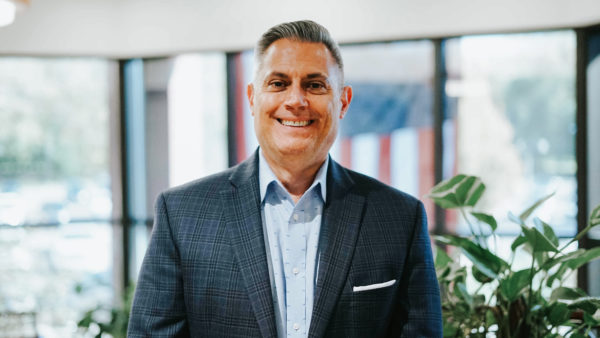From Automation to Process Improvement
At retail pharmacy and healthcare company Walgreens Boots Alliance (WBA), the task before Mark Slater, Vice President and PIO, was on par with Miller’s remit at Steelcase. At the publicly traded company, with $132.5 billion in 2021 revenue, Slater is responsible for business applications across back-office functions like finance, legal, tax, treasury, procurement, human resources and corporate sustainability.
“I essentially own the business applications, in the sense that I am responsible for enabling stakeholders like the CFO, CHRO and Chief Procurement Officer to achieve their strategic objectives through the implementation of technologies, followed by the support of these systems on an end-to-end enterprise basis,” said Slater, who joined WBA in 2020, following stints as a senior manager at IT consultancy Accenture and the director of IT finance at Kraft Heinz.

In the two years since assuming this responsibility, Slater has collaborated internally with the company’s CFO, Controller and Head of Global Finance Shared Services in WBA’s digital transformation. Chief among this bold transformation was the implementation of a new ERP (enterprise resource planning) platform, SAP S/4HANA Cloud. “In August 2021, we took our 9,200-plus stores and 20-plus distribution centers across the world, as well as our corporate office, and put them all in SAP S/4,” Slater said.
As one of the world’s largest retail pharmacies, this was certainly not a task for the fainthearted. At the time, the digital transformation was the biggest SAP S/4 scale-out deployment. Previously, WBA ran a global patchwork of huge, on-premises datacenters with a legacy of monolithic architectures and customizations. “Our business applications stored gargantuan amounts of data primarily involving small transactions, estimated at over 100 terabytes,” Slater noted. (That’s as much data as about one-tenth of the Google database.)
WBA leveraged this mind-boggling array of data for financial forecasts and workforce management and supply chain management decisions, three areas of the business adversely affected by the pandemic. “S/4 now seamlessly ties together our front, middle and back-office processes, assisting more accurate and closer to real-time assessments,” Slater said.
He is presently engaged in another strategic project, involving “smaller use cases that didn’t get addressed by the big project,” he said. “Although many processes were automated in the S/4 deployment, we still had a lot of manual back-office journal entries, account reconciliations and cost allocations that my team needed to address.”
In tackling it, the PIO deployed software from BlackLine to automate and streamline the journal entry approval process and an RPA (robotic process automation) tool from providerAutomation Anywhere to optimize cash allocations, the processing of incoming payments and outstanding debtor invoices. “What’s cool about the BlackLine tool is that it ties a journal entry back to an event that happened like a period-end accrual (expenses or revenues yet to be paid or received), automating the manual upfront part of the process,” Slater said.
Regarding the solution from Automation Anywhere, he said the tool, which pulls up a PDF invoice in the Microsoft Outlook inbox, highlights the supplier number and item code, and then automates the entry into SAP S/4, “easily saved us thousands of hours of manual processing.”
Optimizing Cash and People
At NCR, CIO Bill VanCuren is riding herd on a different cash-driven automation initiative, designed to reduce the complexities surrounding cash collection, a function of accounts receivable. “The problem was twofold—how to improve our cash flow by collecting cash sooner while simultaneously optimizing the productivity of the people performing the function,” VanCuren said.
NCR, founded in 1881 as National Cash Register, is a maker of automated teller machines, self-service kiosks, point-of-sale terminals and check processing systems. The public company tallies over 38,000 employees globally and more than $7.1 billion in revenue.
The automation project, launched in late 2020, began with the statistical modeling of NCR’s historical customer payment behaviors on a region-by-region basis. A combination of advanced analytics and machine learning tools were brought to bear in digging through this large data set to unearth “interesting” payment patterns and anomalies, said VanCuren, who led the project.

The analytics involved such sophisticated statistical methodologies as survival analysis, used to assess the expected duration of time until an event occurs; regression models, used to analyze repeating trends in data to forecast an outcome; and Arima time-series models, in which changes in data across spaced time intervals are analyzed. “Based on these insights, the team created a scoring approach that forecast a customer’s probability to pay early, on time or later,” the CIO said.
Following successful tests of the probabilistic payment solution, VanCuren’s team, in partnership with another team drawn from the finance organization, formatted three separate dashboards to manage cash allocation, for high-level executive attention, operations and financial planning and analysis. The dashboards came onstream at year-end 2021. “We’ve been able to reduce DSO (days sales outstanding) and headcount, reducing the volume of manual tasks in cash management to focus on customers having payment issues,” he said.
Manual processing distractions also were the impetus for a large automation initiative at The Bonadio Group, a nationally ranked top 50 CPA firm offering accounting, tax and consulting services. Like many other companies, the firm is struggling to recruit and retain top talent in this period of abnormally high employee resignations. To compensate for the adverse impact, CIO John Roman stepped up to lead a key project in the firm’s recently updated five-year strategic plan.
“We need to improve the employee experience, making work more efficient and engaging to continue to provide high-touch services to our clients,” said Roman. “There’s no reason why someone skilled as an accountant or an auditor should be doing manual tasks when there are automation solutions that can do it for them.”

In launching the project, Roman retained an outside consultant to interview nearly 20 percent of the firm’s 900 employees across different disciplines and functions. The purpose of the survey was to discern how they felt about workflow demands and related efficiency. “We then gathered and categorized these insights, winnowing them down into separate initiatives,” he said.
The first initiative involves the firm’s auditors. The interviews had suggested a high volume of manual tasks that took time away from their analyses of data on behalf of clients. Roman spearheaded a project to focus on three audit use cases involving a new workflow management platform, provided by Monday.com. “It has these customizable dashboards that organize, document, process and track different tasks,” he said.
Assuming the platform makes work more efficient for auditors, the CIO will hand the project over to his IT manager to collaborate with the firm’s director of audit innovation and director of productivity in rolling it out across Bonadio’s geographic footprint within the next three months.
“This is one of the biggest projects I’ve led as an advisor, technology evaluator and contract negotiator, but it is really a collaborative effort driven by our strategic plan,” he said. “If we don’t have employee satisfaction, we don’t have client satisfaction.”
Modern Customers, Modern Approaches
Customer satisfaction also was a factor in the strategic initiative at Steelcase. “Many people worked at home during the pandemic, got used to easily buying things online and wanted similar self-service user experiences, more than we expected,” said CTO Miller.
To succeed in this environment, Miller’s IT organization mapped out a customer’s typical interactions on the company’s e-commerce site. The map charted how they select specific products, followed by the “hand-off” of the user from steelcase.com to one of its 800 authorized dealers’ sites, through the fulfillment of the order and end-delivery to a traditional office or an employee’s home. “Along this customer journey, we searched for friction points, the variables slowing down user engagement and satisfaction,” Miller said.
Order fulfillment is a case in point. The team worked with consultants at IBM to create a smart order fulfillment system that includes embedded analytics. “It tells us how many orders are processed and fulfilled or if there is a supply chain delay of some sort, allowing us to quickly respond to the situation and make decisions to resolve it,” said Miller, noting that IBM also has been retained to implement SAP S/4HANA Cloud as its core system to better plan for the manufacturing and delivery of the company’s huge and complex product variations.
The team further collaborated with groups from sales and marketing and product development in creating a separate channel for businesses wanting to buy office equipment for employees’ homes. Previously, Steelcase’s office furniture and equipment were sold online irrespective of the ultimate destination. A key challenge was the logistics of the new approach.
“We used to ship a bunch of products to a large skyscraper the same way we shipped a much smaller order to a person’s home,” Miller explained. “We worked with another team from operations to digitally transform the logistics. In turn, this required that we revise the packaging and, in some cases, arrange for assembly of a desk or other item at someone’s home. It was a magic trick to pull all this off.”
Magic is something close to the CIO’s heart. “I wanted to be Batman when I was a boy,” Miller confided. “Unlike other superheroes, he was just this regular person who did amazing things with technology to make a difference in people’s lives. That’s what I love about my job. People sometimes have this misunderstanding about IT, thinking we aren’t human-centered. That’s not true at all. Everything we do here is designed to help people.”
